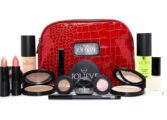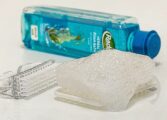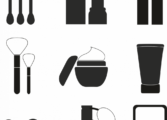Microneedling serum: a comprehensive guide for food enthusiasts

Introduction
Microneedling serum has gained popularity in recent years as a skincare treatment option. It involves the use of tiny needles to create microscopic channels in the skin, allowing for better absorption of active ingredients. In this article, we will provide an in-depth overview of microneedling serum, its different types, popular brands, and its benefits.
1. What is Microneedling Serum?
Microneedling serum is a skincare product that is specifically formulated to be used in conjunction with microneedling treatments. It contains active ingredients such as vitamins, peptides, and antioxidants that penetrate the skin deeply through the microchannels created by the needles. The serum helps to enhance collagen production, improve skin texture, and address various skin concerns.
1.1 Types of Microneedling Serum

There are several types of microneedling serums available in the market, each catering to specific skincare needs. Some popular types include:
– Hyaluronic acid serums: Hyaluronic acid is a moisture-binding ingredient that helps to hydrate and plump the skin.
– Vitamin C serums: Vitamin C is known for its brightening and antioxidant properties, which help to even out skin tone and protect against environmental damage.
– Retinol serums: Retinol is a form of Vitamin A that stimulates collagen production and promotes skin renewal, targeting fine lines and wrinkles.
– Peptide serums: Peptides are amino acids that stimulate collagen synthesis, improving skin elasticity and firmness.
– Growth factor serums: Growth factors help in skin regeneration and repair by stimulating new cell growth.
1.2 Popular Microneedling Serum Brands
Some popular and reputable microneedling serum brands in the market include Dr. Dennis Gross Skincare, SkinCeuticals, The Ordinary, and Skinceuticals. These brands offer a range of serums catering to various skin concerns, providing customers with reliable and effective options.
2. Quantitative Measurements of Microneedling Serum
To measure the effectiveness of microneedling serum, various quantitative assessments can be conducted. These measurements may include:
– Skin hydration levels: Using devices that measure the skin’s water content, hydration levels can be assessed before and after microneedling serum application.
– Collagen production: Biopsies may be taken to assess collagen levels in the skin before and after microneedling serum treatment.
– Skin elasticity: Instruments like a Cutometer can measure the skin’s elasticity, providing data on its firmness and suppleness.
These quantitative measurements help in evaluating the efficacy of microneedling serums and provide insights into their benefits.
3. Differentiating Microneedling Serums
While microneedling serums share a common goal of improving skin health, they may differ in terms of their ingredients, concentrations, and formulation. Some factors that differentiate microneedling serums include:
– Active ingredients: Different serums may contain various combinations of active ingredients, targeting specific skin concerns.
– Concentrations: The concentration of active ingredients in the serum can vary, affecting their effectiveness and potential side effects.
– Additional benefits: Some serums may offer additional benefits such as anti-aging, brightening, or calming properties.
– Formulation: The formulation of the serum, including pH levels and texture, can impact its compatibility with different skin types.
It is crucial to consider these differences when choosing a microneedling serum that aligns with individual skincare needs.
4. Historical Overview of Pros and Cons of Microneedling Serums
Microneedling has a long history dating back to ancient Chinese and Egyptian civilizations, where it was used for various medicinal purposes. Over time, microneedling has evolved, and modern technology has enabled the development of microneedling serums.
4.1 Pros of Microneedling Serums
– Enhanced absorption: Microneedling creates channels in the skin, allowing for better penetration and absorption of active ingredients.
– Stimulates collagen production: The micro-injuries caused by microneedling trigger the skin’s natural healing response, stimulating collagen production and improving skin texture.
– Addresses various skin concerns: Microneedling serums can target a wide range of skin issues, including fine lines, wrinkles, hyperpigmentation, and acne scars.
– Versatile and customizable: Different serums can be used depending on individual skin concerns and desired outcomes.
4.2 Cons of Microneedling Serums
– Discomfort: Microneedling treatments can cause temporary discomfort, including redness and mild pain during the procedure.
– Risk of infection: Improper sterilization of microneedling tools or failure to follow aftercare instructions can lead to infection.
– Skin irritation: Some individuals may experience skin irritation or allergic reactions to certain ingredients present in microneedling serums.
Conclusion
Microneedling serum is a cutting-edge skincare treatment that offers numerous benefits for the skin. With various types, brands, and differences to consider, it is essential to choose a microneedling serum that suits individual skin concerns. While microneedling has a long-standing history, the modern development of serums has elevated its effectiveness. As with any skincare treatment, it is vital to consult a professional and follow proper guidelines to ensure a safe and satisfactory experience.
[INSERT VIDEO HERE – Suggested topic: ”How to properly apply microneedling serum for optimal results”]
















































